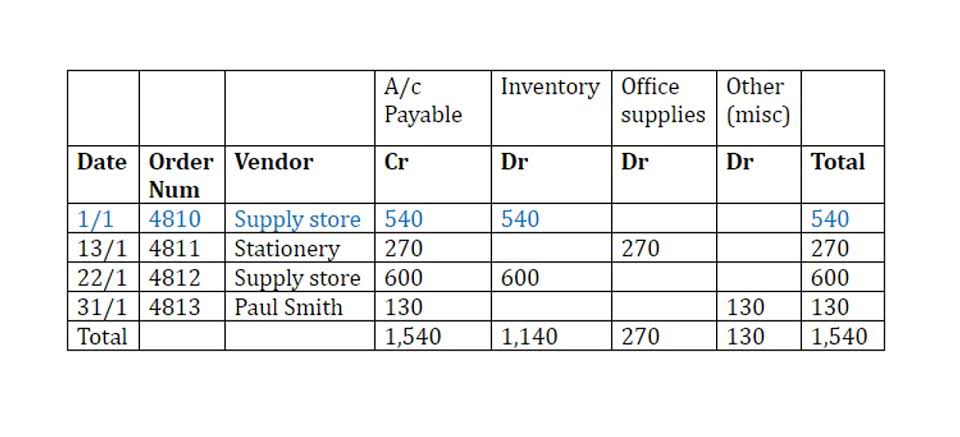
Exactly how much you need to stay in the clear depends on your income, monthly expenses and lifestyle. In conclusion, the concept of normal balance is a fundamental aspect of accounting that ensures accuracy, consistency, and reliability in financial reporting. By applying the principles of normal balance, businesses can maintain balance in their financial records and present transparent and meaningful financial information to stakeholders. Understand the concept of normal balance in accounting and its significance in finance. The monthly accounting close process for a nonprofit organization involves a series of steps to ensure accurate and up-to-date financial records. When an account has a balance that is opposite the expected normal balance of that account, the account is said to have an abnormal balance.
- When the account balances are summed, the debits equal the credits, ensuring that the Academic Support RC has accounted for this transaction correctly.
- That means if accounts payable increases overall credit balance also increased.
- It is important to note that the normal balance is not an indication of whether an account has a positive or negative balance.
- Let’s say there were a credit of $4,000 and a debit of $6,000 in the Accounts Payable account.
- While it might not seem like a big deal, it may make it difficult to open a new account somewhere else.
- Interest rates for certificates of deposit, or CDs, have reached as high as a 6.50% APY as of December 2023.
- For example, a contra asset account such as the allowance for doubtful accounts contains a credit balance that is intended as a reserve against accounts receivable that will not be paid.
While the typical savings account earns an average annual percent yield (APY) of 0.46%, according to FDIC data through Nov. 20, high-yield savings accounts can earn 5% APY or more. And you’re eligible for opening a high-yield savings account and start earning a high 5.35% APY. There are no monthly fees and all balances greater than $1 earn the promoted interest rate after the initial $500 deposit. Within IU’s KFS, debits and credits can sometimes be referred to as “to” and “from” accounts. These accounts, like debits and credits, increase and decrease revenue, expense, asset, liability, and net asset accounts. Money market accounts are a good compromise between a savings and a checking account.
Methodology for choosing the best high-yield savings accounts
Winners are determined by the number of times they appear on any of these lists. Simply put, banks that appear on the most “best savings account” lists score the highest. Our ranking, which we update each month, will include high-yield savings accounts with the best return on your money and the least amount of hoops you need to jump through to open and keep the account.
On the contrary, when an amount is accounted for on the opposite side of its normal balance, it decreases that amount. Debits and credits differ in accounting in comparison to what bank users most commonly see. For example, when making a transaction at a bank, a user depositing a $100 check would be crediting, or increasing, the balance in the account. Ed would credit normal balance of accounts his Online store fee account as this is an expense account. For this reason the account balance for items on the left hand side of the equation is normally a debit and the account balance for items on the right side of the equation is normally a credit. As long as you open an account that is FDIC- or NCUA-insured then your money is typically protected up to $250,000.
normal account balance definition
Checking accounts are ideal for day-to-day transactions and transfers, but because they often earn little to no interest, they’re not the best place to store all of your extra cash. How much money you should keep in your checking account depends on your financial goals and circumstances. Now, let’s move on to discussing the concept of normalizing entries in accounting. It is important to note that the normal balance is not an indication of whether an account has a positive or negative balance. Instead, it simply identifies the side of the account where increases are recorded. For example, a negative cash balance is still recorded on the debit side, as it represents an increase in the cash account to correct the negative balance.
This is typically between 3% and 5% of the transfer amount but can vary between providers. Based on the rules of debit and credit (debit means left, credit means right), we can determine that Assets (on the left of the equation, the debit side) have a Normal Debit Balance. However, eligible taxpayers may still be subject to the failure-to-file penalty and interest, the IRS said. The late filing penalty is 5% of unpaid taxes per month or partial month, with a maximum fee of 25%. Interest rates for certificates of deposit, or CDs, have reached as high as a 6.50% APY as of December 2023.



